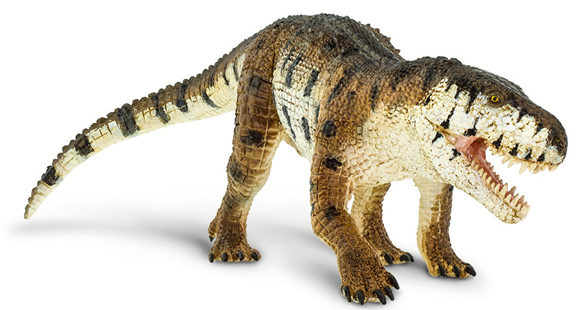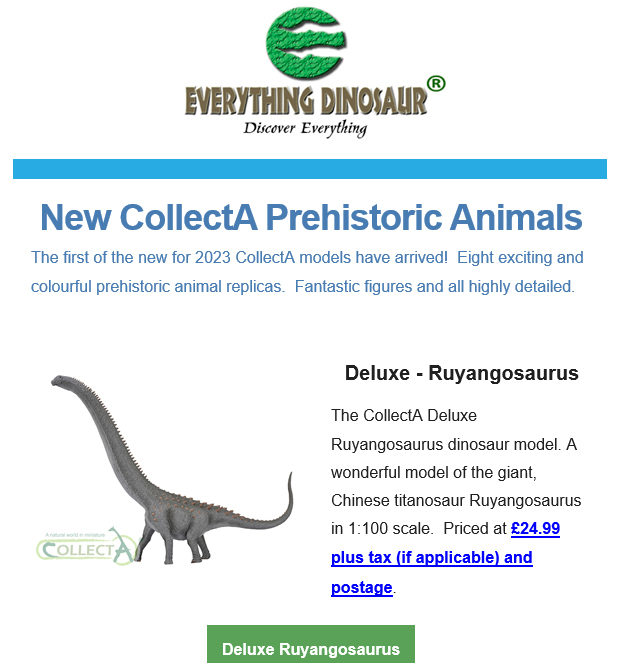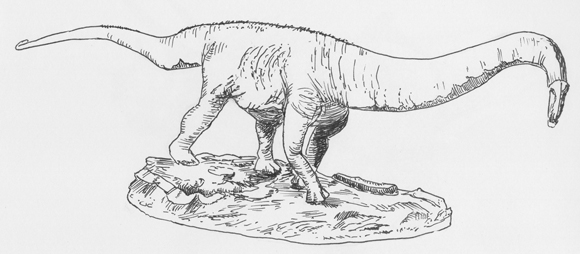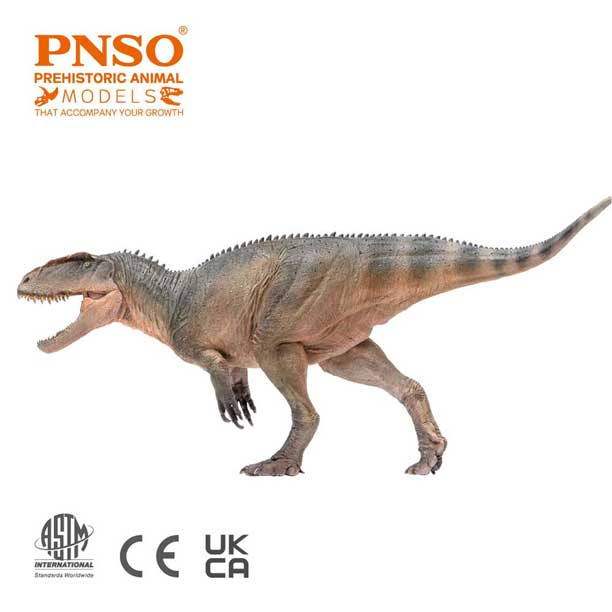Researchers have named and described one of the oldest dinosauromorphs known to date. This new archosaur has been named Gondwanax paraisensis and it has been classified as a silesaurid. Controversies remain over the phylogenetic position of the Silesauridae. They are members of the Archosauria clade but are they a sister-group to the Dinosauria or early ornithischian dinosaurs? Silesaurid fossils are crucial for comprehending the origins and early evolution of the dinosaurs. The fossils of Gondwanax reveal a suite of characteristics that can help palaeontologists to better understand the rise of the Dinosauria.

A life reconstruction of Gondwanax paraisensis. Picture credit: Matheus Fernandes Gadelha.
Picture credit: Matheus Fernandes Gadelha
Gondwanax paraisensis
The fossilised remains were excavated from the Dinodontosaurus Assemblage Zone of the Santa Maria Formation (Ladinian-Carnian boundary). The fossils are thought to be around 237 million years old. Basal silesaurids have two sacral vertebrae. However, Gondwanax had three. This is the oldest occurrence of this characteristic in the fossil record. Having at least three sacral vertebrae is a defining anatomical trait of dinosaurs.

A close view of one of the vertebrae of G. paraisensis. Picture credit: Rodrigo Temp Müller.
Picture credit: Rodrigo Temp Müller
The Santa Maria Formation is found in the Rio Grande do Sul region of southern Brazil. The strata represent sediments laid down in the Middle and Upper Triassic. It preserves a remarkable vertebrate fauna including cynodonts, early dinosaurs, dinosauromorphs and rauisuchians. The Dinodontosaurus Assemblage Zone is named after the dicynodont Dinodontosaurus, which is particularly abundant.
To read more about fossil discoveries from the Dinodontosaurus Assemblage Zone: One of the Oldest Dinosauromorphs.

A view of the fossil site location. The strata here is part of the Dinodontosaurus Assemblage Zone (AZ) of the Santa Maria Formation. Picture credit: Rodrigo Temp Müller.
Picture credit: Rodrigo Temp Müller
An Agile and Lightweight Animal
The researchers estimate that Gondwanax was a fast-running, agile animal. It measured around a metre in length and would have weighed between three and six kilograms. The absence of any skull material has prevented the scientists from commenting on its diet, but it was much smaller than many of its contemporaries. For example, the apex predator in the ecosystem was probably Prestosuchus chiniquensis. Now tentatively assigned to the Rauisuchia, P. chiniquensis measured nearly seven metres long. Gondwanax probably used its speed and agility to avoid the jaws of Prestosuchus.

The Wild Safari Prehistoric World Prestosuchus model.
The picture (above) shows a model of the fearsome Triassic predator Prestosuchus. This figure is one of the prehistoric animals featured in the Wild Safari Prehistoric World range.
To view this range of models: Wild Safari Prehistoric World Models.

A life reconstruction of Gondwanax paraisensis (see human silhouette for scale). In addition, a skeleton reconstruction shown in lateral view (scale bar equals 50 cm) and a world map showing the approximate location of the fossil discovery. Picture credit: Matheus Fernandes Gadelha.
Picture credit: Matheus Fernandes Gadelha
Evidence of a Fourth Trochanter
The researchers are uncertain as to whether the disarticulated bones represent one animal or several individuals. The femur did reveal the presence of a fourth trochanter. This is a knob-like protrusion located on the shaft of the femur that acted as an anchor point for muscles that helped to pull the hind leg backwards. It is thought that the evolution of this feature on the thigh bone permitted members of the Dinosauria to develop a bipedal gait.
The author of the scientific paper, Dr Rodrigo Temp Müller commented that these anatomical features probably permitted Gondwanax to move around much more efficiently than other reptiles within the ecosystem. The evolution of an efficient, upright gait might be one of the reasons for the eventual success and domination of the Dinosauria.

The femur of Gondwanax paraisensis. The thigh bone preserves some signs of a 4th trochanter, which is a common characteristic shared by archosaurs. It is a knob-like process that indicates muscle attachment. The researcher suggests that the presence of this anatomical feature suggests that this silesaurid had “advanced locomotor capability”. Picture credit: Rodrigo Temp Müller.
Picture credit: Rodrigo Temp Müller
Fossil enthusiast Pedro Aurelio stumbled upon remains causing excitement in the scientific community at Paraiso do Sul, a location known for unearthing precursors to mammals and even a miniature crocodile species called Parvosuchus aurelioi. These fossil finds swiftly moved to the research hub at the Universidade Federal de Santa Maria’s Palaeontology Research Centre, where Dr Muller embarked on the delicate process of preparing and examining this piece of prehistoric life and carefully removing the surrounding rock matrix.
Niche Differentiation
Writing in the academic journal “Gondwana Research”, Dr Temp Müller comments that the co-occurrence of Gondwanax paraisensis and a second silesaurid (Gamatavus antiquus) in the same Assemblage Zone represents the oldest evidence of sympatry among “silesaurids” in South America. Two related species living at the same time in the same habitat. In addition, the unique combination of sacral and hindlimb anatomical traits suggests distinct behaviours for these two species. This could be an example of niche differentiation within the same ecosystem.

Author of the scientific paper Rodrigo Temp Müller examining fossils of Gondwanax. Picture credit: Janaína Brand Dillmann.
Picture credit: Janaína Brand Dillmann
Everything Dinosaur acknowledges the assistance of the author of the scientific paper in the compilation of this article.
The scientific paper: “A new “silesaurid” from the oldest dinosauromorph-bearing beds of South America provides insights into the early evolution of bird-line archosaurs” by Rodrigo Temp Müller published in Gondwana Research.
The award-winning Everything Dinosaur website: Prehistoric Animal Models.























